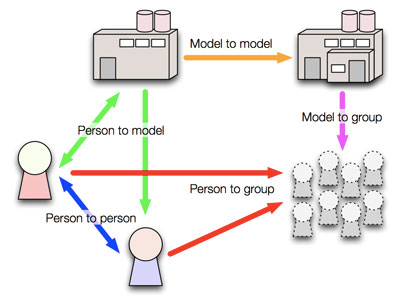
Successful Architecture, Engineering and Construction (AEC) collaboration depends on the timely dissemination of relevant information throughout the project team. This task is made difficult by the number of collaboration interactions that occur and the diverse range of digital tools used to support them. To improve this process it is proposed that a collaboration kernel could weave together these disparate interactions and tools. This will create a more productive and efficient collaboration environment by allowing design discussion, issues and decisions to be efficiently and reliably exchanged between team members and the digital tools they currently use. This article describes how Project Bluestreak, a messaging service from Autodesk Labs, can be transformed into an effective collaboration kernel. To guide this transformation, the principles of the Project Information Cloud have been used to evaluate the existing service and identify areas for future development. These fundamental digital collaboration principles are derived from lessons learnt in the formation of the World Wide Web. When these principles are embodied within a digital collaboration tool, they have demonstrated an ability to improve the timely delivery of relevant information to members of the project team.
Seamless collaboration within a fragmented digital environment
A successful AEC digital collaboration environment brings multiple parties together so that they can productively work towards a satisfactory and achievable design outcome. During this process participants must engage in a variety of interactions between team members and the digital models used to describe the design. These interactions, and the technologies commonly used to enable them, are summarised in the following diagram and table.
Note: The term 'model' refers to a CAD or BIM digital model that represents the proposed design. Digital models play an important role in the collaboration process as they communicate ideas, impose restrictions and can be manipulated to reflect a participant's opinion.







